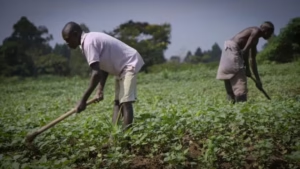
In India, where over 80% of farmers are smallholders, the weather isn’t just a topic of conversation — it’s a daily gamble that shapes lives, harvests, and livelihoods. A delayed monsoon, a surprise hailstorm, or a week-long heatwave can undo months of hard work. As climate change makes weather patterns more erratic and extreme, the need for reliable, timely, and farmer-friendly climate services has never been greater.
But what exactly are climate services, and how can they transform farming for India’s smallholders?
What Are Climate Services?
Climate services refer to tools, forecasts, advisories, and information systems that help people — particularly farmers — understand, prepare for, and respond to weather and climate risks. These include:
-
Seasonal weather forecasts
-
Early warning systems for floods, droughts, or cyclones
-
Localized crop advisories
-
Pest and disease outbreak alerts
-
Agro-climatic dashboards and mobile applications
Delivered in the right format, at the right time, and in local languages, these services can help farmers make smarter decisions about when to sow, what to grow, how to irrigate, and when to harvest.
Why Smallholders Need These Services the Most
Smallholders are often the first to feel the impacts of climate shocks — and the least equipped to cope. They typically:
-
Farm on small, fragmented plots of land
-
Lack access to crop insurance or financial buffers
-
Depend heavily on rain-fed agriculture
-
Have limited access to extension services or formal weather stations
For them, access to timely, location-specific weather and climate information isn’t just useful — it can be the difference between profit and loss, between resilience and ruin.
How Climate Services Work in Practice
Here’s how climate services are already helping transform farming in parts of India:
1. Location-Specific Weather Forecasts
In states like Maharashtra and Odisha, digital platforms are now sending five-day weather forecasts tailored to district or even village-level conditions via SMS and voice calls. Farmers receive advice on whether to delay sowing, apply fertilizer, or irrigate based on expected rainfall.
2. Early Warning Systems for Extreme Events
Communities in flood-prone regions of Assam are using SMS-based flood alerts that give them critical hours — sometimes even days — to protect livestock, equipment, and seeds.
3. Pest and Disease Advisory Systems
In Telangana, a mobile-based system is alerting cotton farmers to possible pest outbreaks like pink bollworm, based on climate models and local observations, allowing them to act early and avoid crop loss.
4. Village Climate Resilience Committees
Under initiatives like SAHeLEE and others, community-based structures are being set up to interpret climate forecasts, train farmers, and act as local resilience hubs.
Barriers to Scale – and How to Overcome Them
While the potential is huge, there are still challenges in scaling climate services to all smallholders:
-
Limited reach in remote areas
-
Low digital literacy, especially among women farmers
-
One-size-fits-all forecasts that don’t reflect local realities
-
Lack of coordination between meteorological departments, agri extension services, and local institutions
To overcome these, we need:
-
Localization: Hyper-local forecasts down to the village or even farm level.
-
Integration: Climate services embedded into existing extension programs, farmer groups, and agri-tech apps.
-
Co-creation: Designing services with farmers, not just for them.
-
Equity: Ensuring women, tribal farmers, and marginalized groups are not left behind in the climate information ecosystem.
Looking Ahead: Climate Resilience Starts with Information
Climate change is not a distant threat for India’s farmers — it’s a daily reality. But with the right tools, they can anticipate, adapt, and act. Climate services offer more than just forecasts; they offer confidence, choice, and control over an uncertain future.
Projects like SAHeLEE are paving the way by integrating climate services into broader efforts to build resilient, equitable, and sustainable food systems. The goal isn’t just to help farmers survive the next drought or flood — it’s to help them thrive in a changing climate.



